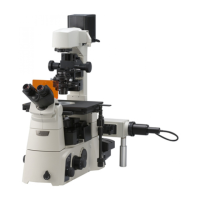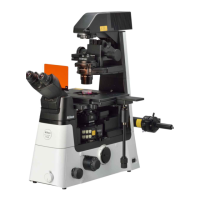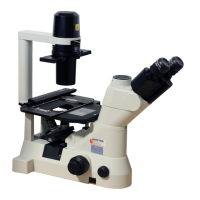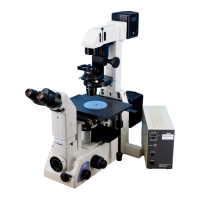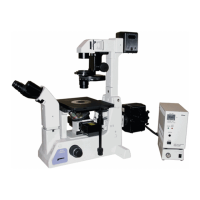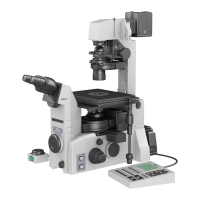Chapter 3 Operation
3.14 PFS (Perfect Focus System) Operation
84
3.14.2 Starting and Stopping In-focus Observation with the PFS
B
Coarse
Fine
ExFine
Epi Shutter
FL Block
Refocus
Escape
PFS
OFFSET
OU
T
DI
CH
RO
I
C
MIR
R
OR
IN
L80
E
YE
MEMORY
DISPLAY
ON
Z
-
RESET
1X
1.5X
BRIGHTNESS
R100
L100
FOCUS
PFS
Figure 3-46 Preparation for in-focus observation
(1) Start the PFS function
MEMORY
PFS
ON RECALL
FOCUS
MEMORY
PFS
ON RECALL
FOCUS
(2) Place objective into focusable range
MEMORY
PFS
ON RECALL
FOCUS
(3) Focus on the reference position (boundary
surface)
MEMORY
PFS
ON RECALL
FOCUS
Figure 3-47 Starting the PFS function
1. Select an objective, and place a specimen
onto the stage.
Place a PFS ready objective into the optical
path. (See “PFS ready objectives” on page 83.)
Perform water/oil-immersion procedures as
necessary.
2. Place an IR filter into the optical path.
Attach an IR filter (ø45 mm) to the filter slider on
the pillar illuminator, and then place the IR filter
into the optical path.
For epi illumination, attach an IR filter (ø25 mm)
to the filter sliders on the epi illuminator.
3. Place the dichroic mirror into the optical path
by moving the DICHROIC MIRROR - IN/OUT
lever on the top of the PFS Motorized
Nosepiece to the “IN” position.
4. Focus on the specimen by rotating the focus
knobs on the microscope.
5. Start the PFS function by pressing the
PFS-ON switch on the front operation panel.
The PFS-ON switch indicator lights up, and the
PFS function will start. The focus knobs will be
disabled while the PFS function is running.
PFS function is running
PF100x_ Z:__124.375um
E100_ Coarse_ PFS:On_
When the objective enters the focusable range,
the FOCUS indicator on the front operation panel
will begin to blink. When the focus is on the
reference position (boundary surface), the
indicator will light up.
When the PFS function is enabled, the focus
mechanism will be controlled automatically to
maintain the focus on the reference position.
* The “focusable range” is defined for each
objective, and is the region within which the
PFS function is enabled for that objective.
4
3
1
2
ON switch lit
FOCUS
blinking
FOCUS lit
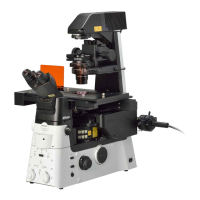
